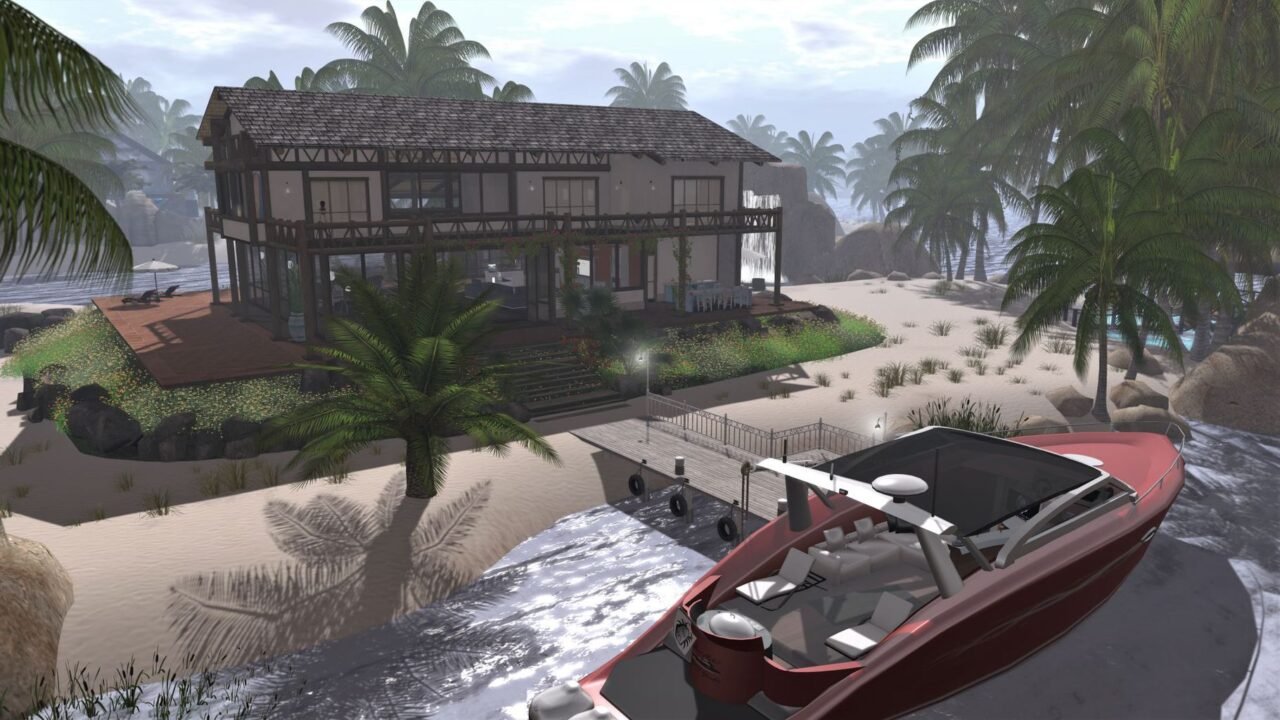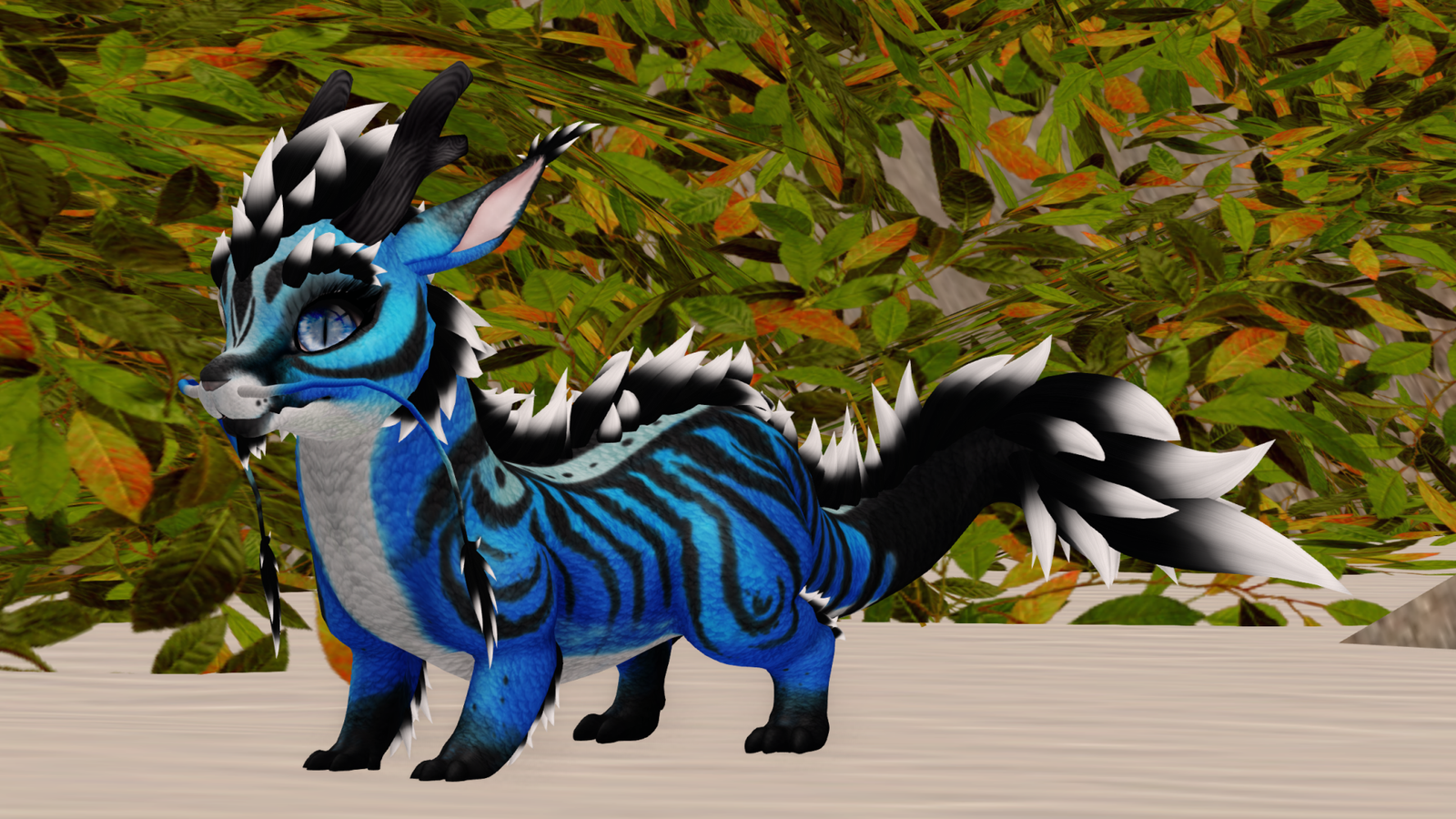Welcome to Samuel’s Stable, a website and blog partly about Second Life but mostly about a story created using Second Life as a toolset.
We follow a group of friends using Second Life’s cameras: a reality TV show created in a virtual world. But first, some explanations are necessary to provide context for their story.
What is Second Life?
Second Life is one of many virtual worlds supporting user-generated content. Users can create an avatar, interact with other user avatars in the world, attend events, see created destinations, and earn virtual currency that they can convert into real-world currency. You can read this Wikipedia entry that presents a well-researched, warts and all view of this virtual world.
Second Life content designers provide all the building blocks necessary to create a story. Characters, clothing, interiors, outdoor environments, vehicles, flora and fauna, lighting, skies, weather effects, and much more are available from Second Life designers.
Some posts in this blog will be about character creation, animation, and recording methods. Most posts will be from an in-world perspective using Second Life avatars as characters in a story. The focus will be on who the characters are, where they’re going, and what they’re doing rather than on how to make content for a virtual world.
What is an Avatar?
An avatar is an icon or figure that represents a real person. A person creates an avatar and uses that avatar to engage with other avatars in the same setting. Think of an avatar as a puppet on invisible strings. A real person, the puppeteer, controls the avatar.
Avatars, like puppets, don’t have to look like their puppeteers. The story is more immersive if avatars take on the shape of their character in the story. For digital avatars, a virtual world’s technical limitations and imposed rules are the only constraints on their appearance.
Second Life Avatars
Second Life avatars range from realistic humans and animals to fantastical creations. You can be anything that digital creators can model, texture, and animate within Second Life’s technical limits and terms of service.
Each avatar has a unique look courtesy of their mesh attachments, skin and eye textures, advanced material settings, hair or fur, rigging, bone slider values, animation, and clothing. You can look like someone you’d see in the street or a flame-breathing dragon the size of a jumbo jet!
Default Avatar
Second Life has a default “vanilla” avatar that is downloaded with a client-side viewer and installed in the viewer’s character folder.
The default avatar comprises:
- low-poly mesh components (hair, head, eyes, eyelashes, upper body, lower body, and skirt)
- textures (colours, bumps, and alphas)
- an avatar skeleton to which creators can rig low-poly mesh components for animation
- variables for turning an avatar’s head and eyes to focus on in-world and user interface events
- attachment point definitions for attaching items such as sunglasses and jewellery to bones in the avatar skeleton.
Every user avatar in Second Life is built on top of this underlying default avatar.
Classic Avatar
A classic avatar uses the default avatar as a base and has as a minimum a shape, eyebrows shape, skin, and eyes. These four body parts are mandatory for rendering and animating an avatar via Second Life’s engine and cannot be detached.
The shape, eyebrows shape, skin, and eyes are referred to collectively as the system or classic avatar. Even if a classic avatar’s skin and eyes are made invisible by alpha channel texture maps, they are still present.
A shape is a set of slider values used to manipulate an avatar’s bones, deforming the skeleton, and consequently an avatar’s mesh body, to create unique looks.
Selecting a female shape will make the default avatar’s facial hair textures unavailable, switch female-specific bone sliders on, switch male-specific bone sliders off, and make the default avatar’s mesh skirt available for texturing.
Selecting a male shape will make the default avatar’s facial hair textures available, switch female-specific bone sliders off, switch male-specific bone sliders on, and make the default avatar’s mesh skirt unavailable for texturing
An eyebrows shape includes:
- colours, styles, and textures for the default avatar’s facial hair (male avatars only) and low-poly mesh hair (male and female avatars)
- a set of slider values used to shape an avatar’s brow bones.
More recent advances in Second Life graphics have superseded the hair features of the eyebrows shape. There are far better options now for head hair and men’s facial hair.
All colour and style sliders in the eyebrows shape should be set to zero. Head hair and facial hair textures should not be used. This makes the default avatar’s low-poly mesh hair “helmet” invisible.
The only part of the eyebrows shape that should be used are the brow shape sliders.
A skin is a set of textures that cover the default avatar’s mesh head, upper body, and lower body. Skins have an in-world complexity value because they also include all the default avatar’s low-poly mesh components.
The eyes are textures that cover the default avatar’s mesh eyeballs.
Users change the appearance of a classic avatar’s mandatory body parts by altering or replacing them—e.g. adjusting shape sliders, tinting skin, or replacing green eyes with blue eyes. What makes a classic avatar unique in Second Life is changes to their shape, eyebrows shape, skin, and eyes.
Classic avatars are popular in-world because of their low-poly simplicity, low in-world complexity values, fast rendering, ease of use, and low lag induction.
Mesh Avatar
What is called colloquially a “mesh avatar” has a high-poly mesh head, body, hands, and feet, all created by other Second Life users. These mesh objects are attached to an avatar’s skeleton in-world using the default avatar’s attachment points.
Mesh attachments are rigged to the avatar’s bones, so they move with the avatar. For example, the fingers on Slink’s detailed high-poly mesh hands follow the movement of the finger bones to which they are rigged.
Unlike the classic avatar’s mandatory body parts, these mesh attachments can be removed.
High-poly mesh attachments are not the same as the default avatar’s corresponding low-poly mesh components. Shape slider values must be adjusted so mesh attachments don’t look deformed.
For example, setting a chin depth slider to 15 for a GA.EG, Genus, or Catwa high-poly mesh head attachment makes these heads look chinless. The same value is fine for a classic avatar’s low-poly mesh head.
A classic avatar’s skin and eye textures can be baked onto third-party mesh attachments. The classic avatar is not rendered and only the mesh attachments can be seen.
When using heads and bodies from different Second Life designers, care must be taken to match or blend the head and body skins so there is no visible texture seam at the neck.
Mesh avatars are popular for their smooth curves and detailed features. However, as high-poly mesh objects, they have higher in-world complexity values, are slower to render, are more challenging for beginners, and too many in one place creates significant lag in their in-world location.


